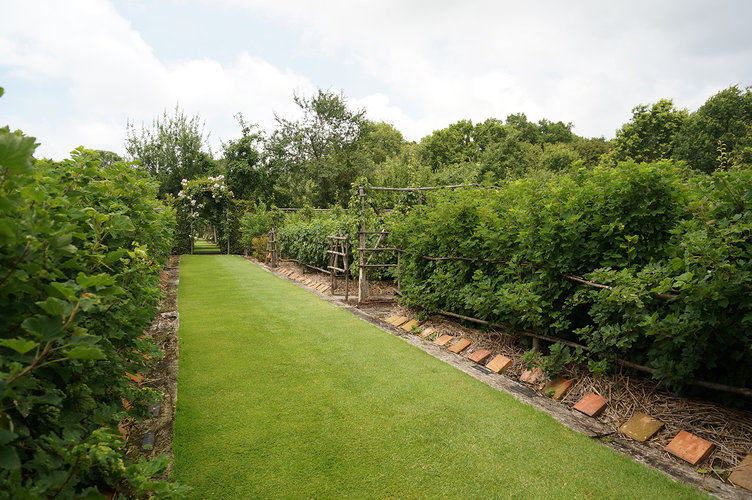
I have made two new friends in my travels: Sabine, my French-speaking GPS, who patiently and reliably directs me along barely-paved roads through fields of sunflowers to the most remote locations; and Serendipity, who is apparently the one actually organizing this trip, while I am merely financing it. Between the three of our contributions, it is assured that I not only show up to each garden but also take from them a series of compounded lessons based upon some divine order of experience. Chateaus Hautefort and Losse were the first test of my appreciation for Serendipity’s intervention. And now the disappointment of Manoir d’Eyrignac has been transformed by my visit to Prieure d’Orsan, clarifying my (previously snarky) criticism of the former and solidifying my respect for the latter.
Considering only their representations of form and requirements of maintenance, Orsan and Eyrignac are superficially similar. But Orsan possesses the elusive quality of appropriateness—the sense that the garden belongs to and enhances its setting, inextricably linking them so that one cannot be imagined without the other. The bits and pieces that comprise the variously themed rooms of Eyrignac seem to have been plucked from time, imagination and geographical region and reconfigured into well-organized, impressively detailed but ultimately unrelated gardens. Even the somewhat modest Manor House seems out of place with the grandeur surrounding it. All of the elements combine and compete, resulting in a cacophony of visual noise. Orsan, on the other hand, sings like a well-conducted choir.
The gardens of Prieure d’Orsan are set within the u-shaped frame of a 12th century monastery (now a hotel.) The elaborate geometry of the courtyard simplifies as it becomes orchards and then frames of trees around fields, transitioning gently into the farmland surrounding it. The gardens were designed and cared for by the monks who lived there, to nourish both their bodies and spirits. There is symbolic purpose to every element—from the overall arrangement of spaces to the individual plants that compose them. The extravagant levels of maintenance required to keep the hedges pruned, espaliers trained and trees pleached were performed gladly and respectfully in an effort to strengthen their relationship with God. The garden is both modest and grand, transforming simple materials into impressively intricate structures and employing scale and repetition to inspire a sense of quiet awe and deep serenity. It is form that follows function, in one of its oldest iterations and highest aspirations.























